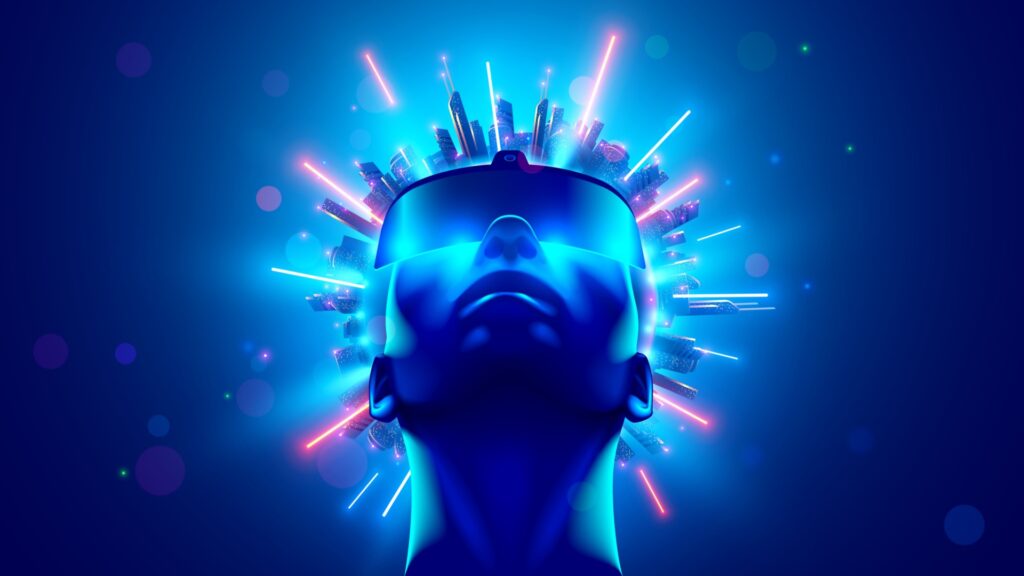Metaverses are worlds created at the intersection of the real and virtual, offering users unique opportunities for interaction, entertainment, and education. Each year, technology rapidly advances, and metaverses become increasingly relevant. But what exactly can we expect in the coming years? In this article, we'll explore key trends that will define the future directions of metaverse development. But first, let's examine the cases of modern metaverse concepts.
How Metaverse Concepts are Currently Implemented and What Their Future Potential Is

Meta (Facebook)
One of the best-known attempts at creating a metaverse is the Meta project, led by Facebook. In 2021, CEO Mark Zuckerberg announced the company's rebranding and introduced the concept of the metaverse as a place where various aspects of digital life will converge. Meta plans to create virtual spaces for communication, work, and entertainment using VR resources like Oculus. Platforms such as Horizon Worlds allow users to create their own virtual spaces, host events, and interact with friends. Meta's official website provides an answer to why the metaverse is a breakthrough in the development of social connections and how it can bring us closer to the feeling of personal presence while being at a distance.
Decentraland
Decentraland is a decentralized virtual reality where users can create, experience, and monetize content and applications. This space is managed using blockchain technology, which means users can own plots of land, build objects on them, and sell them. In Decentraland, you can host events, exhibitions, games, and much more. The project attracts companies and artists who want to create unique virtual experiences. The uniqueness lies in the fact that Decentraland is owned, created, and managed by the people who use it every day, as stated on the platform's website.
Roblox
Roblox is a platform for creating games and virtual worlds that is immensely popular among youth. It offers tools for creating interactive games and spaces that can be accessed by other users. Roblox provides opportunities for social interaction and cross-platform access, making it an example of a successful metaverse where users can not only play but also earn from their creations. How exactly games are connected to the metaverse is detailed in an article by Binance Academy.
Nreal and the AR Metaverse
With the development of augmented reality (AR), new concepts of metaverses are emerging, such as Nreal. These technologies create a hybrid experience where digital content is integrated into the physical world. Users can interact with virtual objects in real time, pushing the boundaries of what we consider the metaverse. The application of such technologies is in demand in various fields—from education to commerce.
Each of the presented metaverses brings something unique, and together they shape the future of digital communication, creativity, and economy. It is important to follow their development and the opportunities they open. The question is not only how we will use the metaverse but also how it will change our perception of reality. Behind the promising prospects lies a complex network of technologies, with artificial intelligence (AI) becoming the cornerstone, as discussed in detail in a Forbes article.
The Future of Metaverses

The decreasing cost of equipment for virtual and augmented reality (VR and AR) and the improvement of internet infrastructure are making metaverses more accessible to a wide audience. Simplified interfaces allow more people to easily enter this new digital world. This, in turn, leads to a more diverse user base, fostering the growth of the content and services available in the metaverse.
Integration With the Real World
In the coming years, one of the main trends will be the integration of metaverses with the real world. We will see closer connections between physical and virtual spaces. For example, through augmented reality technologies, users will be able to interact with objects in their homes, adding digital elements to them. We can also expect new formats of online commerce, where customers will be able to try on products in virtual showrooms and then order them for home delivery.
New Forms of Social Interaction
Metaverses will develop new ways of interacting between users. Many platforms are already experimenting with formats like "virtual parties," educational classes, and workspaces. Social functions are expected to become more advanced, providing the opportunity to organize events, share experiences, and build communities regardless of the geographical distance between participants.
Development of the Virtual Asset Economy
With the growing interest in the metaverse, there is active growth in the economy of virtual assets. NFTs (non-fungible tokens) are becoming an integral part of the digital world, allowing users to own unique virtual items. In the future, we can expect new forms of monetization and methods for protecting property rights to digital assets. This undoubtedly opens new horizons for content creators and developers.
Ethical Issues and Digital Security
As the capabilities of metaverses expand, a range of ethical and legal questions arise. For instance, how can user safety, data protection, and human rights be ensured in a virtual environment? Privacy concerns and content control will become even more pressing, and future platforms must offer robust solutions to ensure safe interactions.
Metaverses undoubtedly represent a dynamically evolving field where technology and society will constantly interact. However, it is equally important to address ethical and legal aspects to create an environment where users can not only have fun but also interact safely with each other.
The Impact of Blockchain on the Evolution of Metaverses

Blockchain technology plays a crucial role in the development of metaverses, providing not only the tokenization of digital assets but also shaping the structure and functionality of the metaverses themselves. Let's look at how blockchain opens up new possibilities for metaverses.
Ownership and Management of Assets
Through non-fungible tokens (NFTs), users can verifiably own unique items, be they virtual real estate, digital collectibles, or unique skins for avatars. Blockchain provides not only authentication but also the ability to easily transfer these assets between users, creating a new level of interaction and economy within metaverses.
Economic Models and Earning Potential
Metaverses with integrated blockchain technology are opening up new ways for users to monetize and earn. Players can earn tokens by playing games, creating content, or providing services to other participants. Smart contracts automate processes related to payments and record-keeping, simplifying interactions between users and creating new incentives for creativity and collaboration within metaverses.
Blockchain also paves the way for establishing connections between different metaverses, leading to a richer and more integrated virtual space where users can move and interact freely, regardless of the platform.
In conclusion, metaverses are becoming more attractive and diverse, offering new horizons for users and developers alike. However, the future of metaverses lies not only in the hands of technological innovators but also in the broader social discourse on ethics, inclusivity, and the limits of digital technologies.